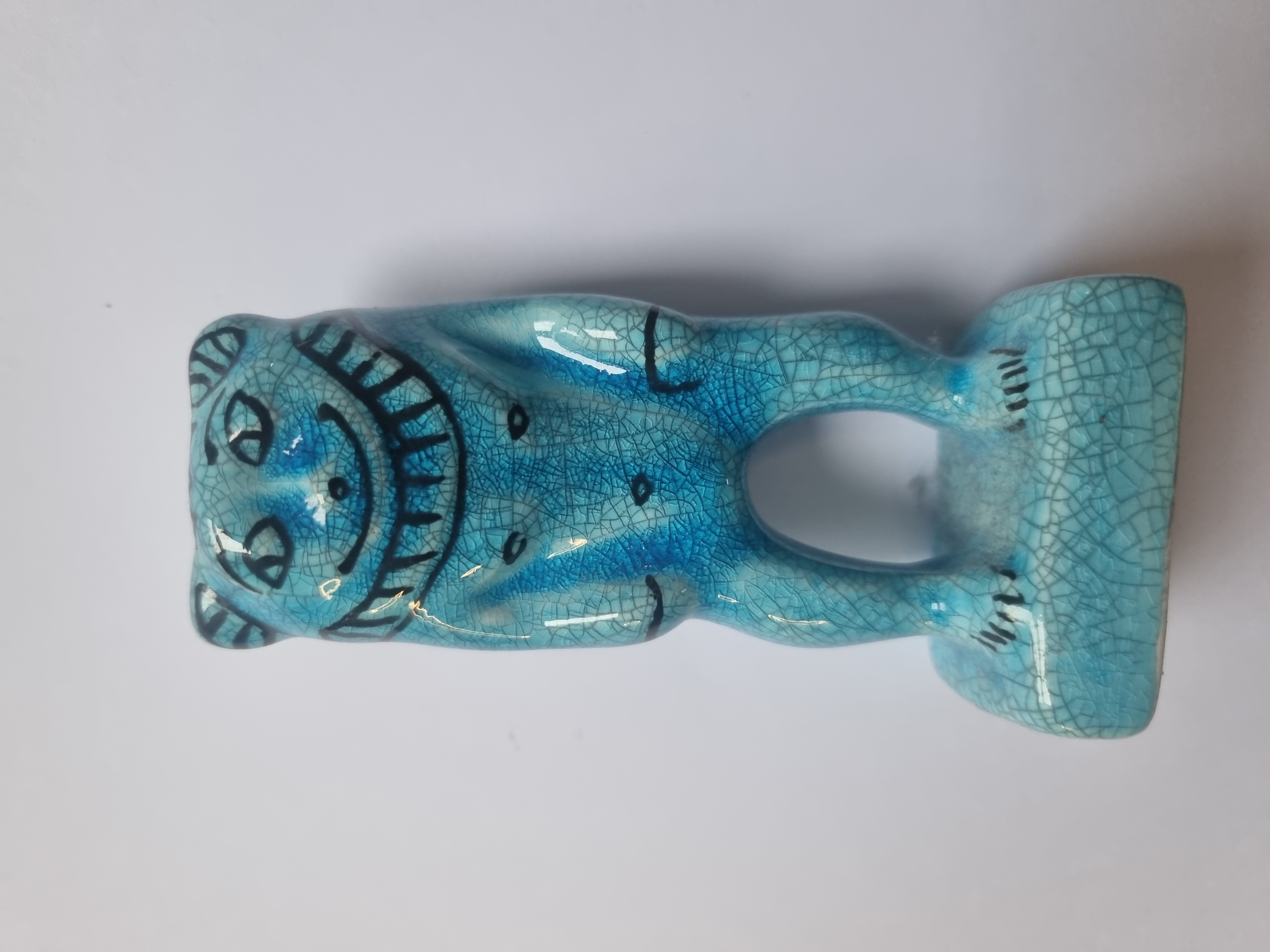Bes
Introduction to Bes
Bes was a unique god in the Egyptian pantheon, far different from the majestic and dignified representations of gods like Ra or Osiris. He was a protector, a guardian of households, women, and children, as well as a deity associated with music, dance, and fertility. What makes Bes particularly interesting is that he was often depicted not in a formal, regal manner but in a more approachable, even comical style, which is rare for an ancient deity.
Physical Appearance
Bes is typically shown as a short, stocky figure with a large, lion-like head, which reflects his fierce protective nature. He is often depicted with a wide, grinning mouth, sticking his tongue out, which conveys his playful, sometimes mischievous personality. His face is framed by a wild mane or hair, which resembles a lion’s, and his body is often human, though he has some features that make him appear more beast-like.
One of the most striking things about Bes is his portrayal as a dwarf, which deviates from the grand, towering figures of other Egyptian gods. This was not seen as a sign of weakness but rather as a sign of his unique role as a deity who was closer to the everyday lives of people. His short stature, combined with his exaggerated, grotesque features, was intended to make him both an approachable and protective figure.



Role and Symbolism
Bes’s role was multifaceted. He was often invoked as a protective figure, especially in domestic settings. Families, particularly mothers and children, would call on Bes for protection from evil spirits and misfortune. He was also thought to ward off dangers like snakes, scorpions, and other harmful creatures. His image would frequently appear on amulets, jewelry, and household items, believed to bring luck and safeguard the home.
In addition to his role as a protector, Bes was a god associated with joy, music, and entertainment. He was often depicted in scenes of dance, playing musical instruments, or entertaining with performances, showing his connection to the lighter, more joyous aspects of life. This association made him particularly beloved in everyday Egyptian life.
Bes was also linked to fertility and childbirth. Women would invoke him for protection during labor, and he was often depicted as a helper in ensuring the well-being of mothers and children.
Cultural Impact
What makes Bes particularly interesting is that he was widely venerated by ordinary people, unlike many other Egyptian gods who were primarily worshipped by the elite or priests. Bes’s appeal was rooted in his connection to everyday life—he was a god of the home, of the family, and of the protection of the vulnerable. His iconography can be found not only in temples and tombs but also in personal objects, such as mirrors, jewelry, and household goods.
Bes also gained popularity beyond Egypt. His image spread throughout the ancient world, particularly in regions like Nubia, the Levant, and even into Greece and Rome, where he was sometimes adapted and reinterpreted as a god of fortune, amusement, and protection.
Conclusion
In summary, Bes stands out in Egyptian mythology as a god who defied the conventional ideals of grandeur and majesty. Instead, he embodied the everyday struggles, joys, and desires of ordinary people. His role as a protector, provider of joy, and symbol of fertility made him an integral figure in the domestic life of ancient Egyptians, and his enduring popularity is a testament to the deep connection people felt with him as a guardian and a source of comfort.